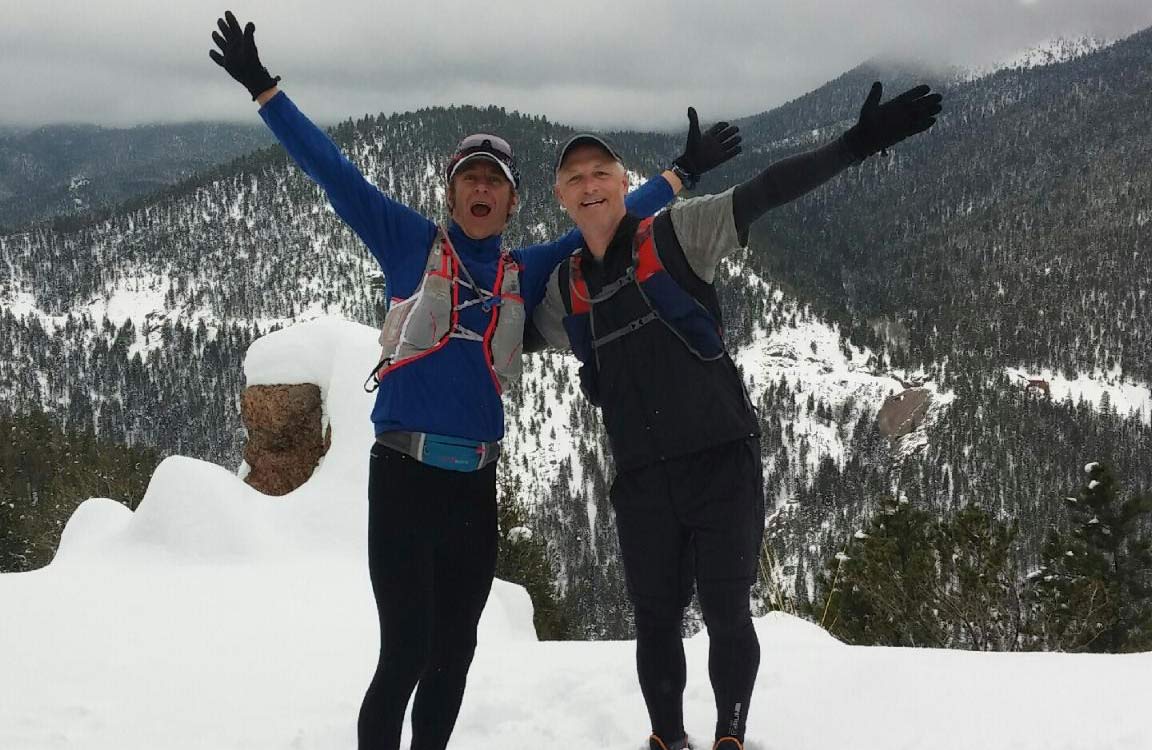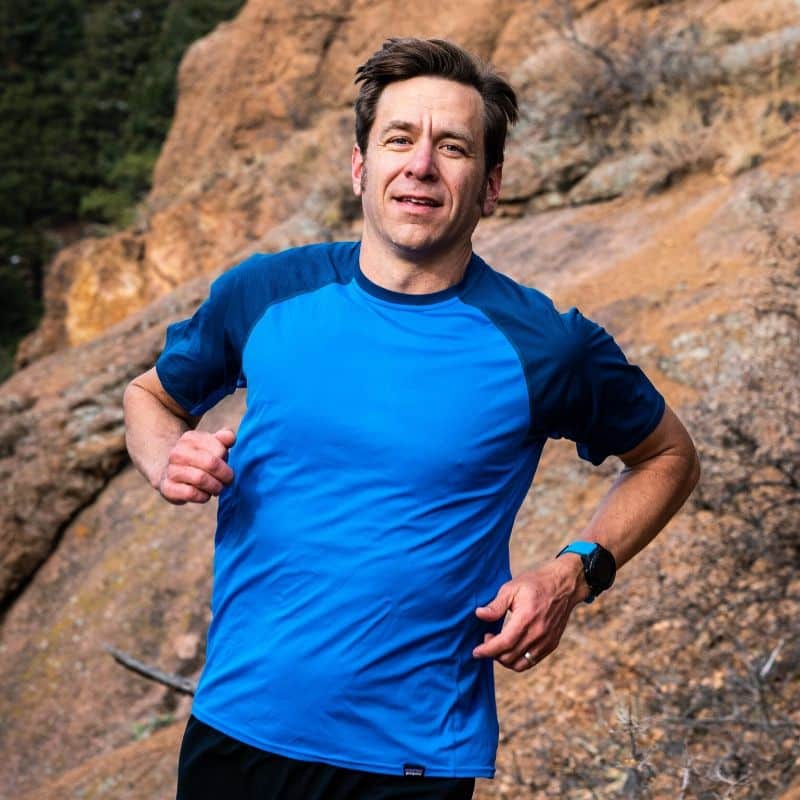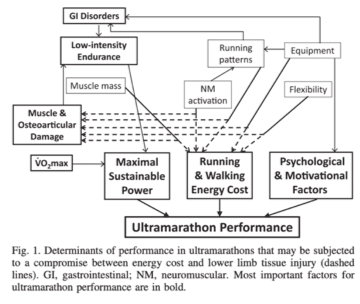
How Ultrarunners Should Leverage Adversity to Improve Performance
By Jason Koop,
Head Coach of CTS Ultrarunning
This weekend along Colorado’s front range we saw a snowstorm of biblical moderately interesting proportions. Areas from Denver to Boulder and where I live in Colorado Springs received anywhere from 12-30 inches of the fluffy white powder in a matter of hours. All this made for slow going on the trails. The routine loops I did around my neighborhood trails took a good 30-40% longer than they normally would and included a lot of hiking and post holing. Much to my surprise (and dismay), I noticed that a number of trail and ultrarunners in the region decided to catch up on their latest Netflix binge by heading indoors to perform their workouts on treadmills and cycling trainers. Seems as if the boatload of snow and the fear of missing a quality workout sent these athletes in search of a more controlled environment. I am not going to mince words here: if you avoided going outdoors for training without a really compelling reason, it was a mistake. Here’s why.
Training quality isn’t your limiting factor
In most locales, bad weather events are a rarity. Big snow dumps, torrents of rain, and sub-hurricane force winds are the anomalies, not the norm. That being the case, you have plentiful days to rack up high quality workouts when you look at your training through the lens of months of preparation. Even a bad day here or there does not break the fitness bank unless you string a few weeks of them together. So, when foul weather is afoot, take a look at the big picture and realize that you will have far more good weather days than bad weather days to contend with.
In addition to this, it is becoming more and more abundantly clear that traditional fitness markers like running economy, VO2max and the like are less spuriously correlated with ultramarathon performance compared to traditional endurance events. Recent research published in the International Journal of Sports Physiology Performance looked at the cardiovascular and performance markers of runners competing in 50k, 80k and 160k races. As the distance went up, the traditional markers of performance correlated less and less with the actual performance of the athletes. The corroborates a framework suggested by Guillaume Millet that states that myriad factors affect ultramarathon performance. The fitness you gain from high quality days is important, but it’s not the only thing to be concerned with.
Adversity and opportunities to hike are scarce
On the flip side, the opportunities you have to intentionally face some adversity are scarce. If you have been in the ultrarunning game long enough you know firsthand that sometimes race day deals you a crappy hand. Sometimes it a copious amount of mud, like the Bighorn 100 is notorious for, or maybe it’s a hailstorm at 12,000 feet like I had to personally contend with during my first Leadville Trail 100. The point is, look at the foul weather days as opportunities to test your gear, get a little cold, and perhaps a smidge uncomfortable. You’ll thank yourself come race day when you have to do the same. To be clear here, I’m not advocating for recklessly going out in hurricane force winds, conditions with high avalanche danger, or anything that would put your personal safety at risk. But, to use this weekend’s snowstorm as an example, for most part it was just some snow, and with some common sense, planning, and good equipment, an outdoor run or hike could be completed safely.
In addition to this, foul weather days (particularly with snow and rain) give you good opportunities to practice hiking when you might not otherwise. Over the years, my individual analysis of the athletes I work with has revealed that they run too much in training compared to the hiking they will actually do during a race. So much so, that I was inspired to create this data project to get a better handle on the proportion of hiking vs. running in major ultramarathons (if you have not done so already, please contribute a data file for the sake of the project). Miles are not the only thing that matter, and days like we encountered last weekend are one of the big reasons I prescribe and monitor training volume by time.
So, the next time the weather is foul, don’t think about the workout you are going to miss, think about the opportunity you have to gain. Adversity and hiking are scarce in most athletes’ training; take advantage of the the opportunities you have!
► Free Ultrarunning Training Assessment Quiz
Take our free 2-minute quiz to discover how effective your training is and get recommendations for how you can improve.
References
Coates AM, Berard JA, King TJ, Burr JF. Physiological Determinants of Ultramarathon Trail-Running Performance. Int J Sports Physiol Perform. 2021 Mar 10:1-8.
Enjoying This Article? Get More Free Running Training Tips
Get our coaches' best training advice, delivered straight to your inbox weekly.
Millet, G. Y., Hoffman, M. D., & Morin, J. B. (2012). Sacrificing economy to improve running performance—a reality in the ultramarathon? Journal of Applied Physiology, 113(3), 507–509.



Comments 3
As my fellow swedish Nordic ski Olympic Gold medalist said: ”Worst possible weather today. Perfect! Could be race day conditions. Let’s spend some extra time out there.”
(Fellow in nationality that is, nothing else….)
A debt of gratitude is in order for sharing. As of late, I simply need to set up an indoor bicycle mentor and your post gives me a few thoughts.
Great post Koop! Loved it. We are so attached to our comforts and routines, even the idea of missing a “quality” work out creates anxiety for many runners. It is actually good advice to get uncomfortable during your training and learn how to deal with it. As little as getting your shoes wet on purpose on your training run, or may be get little cold by not wearing this one extra layer of clothing (not to get graphical here) can make us be more flexible during the actual race. And as you pointed it out in your other posts, to those who chose to run Ultras the mental training and resiliency is as important as volume and other fancy metrics we tend to focus on.